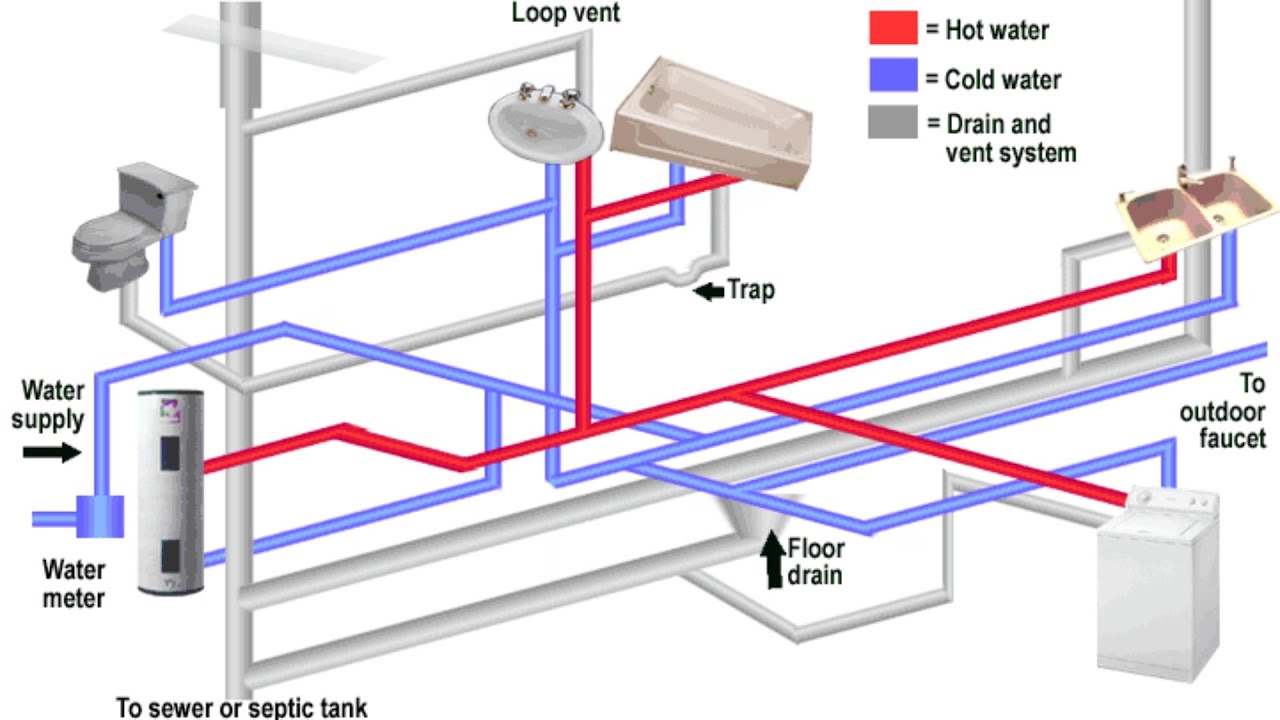
Plumbing systems are the lifeblood of any commercial building, providing essential services like water supply and sanitation. However, the way these systems are designed can have a significant impact on water efficiency. In an era where sustainability is paramount, understanding the role of plumbing design in conserving water is crucial for businesses looking to minimize their environmental footprint and operational costs.
Commercial plumbing systems encompass a network of pipes, fixtures, and appliances designed to facilitate the flow and use of water within a building. From restrooms to kitchens, every aspect of a building’s plumbing design influences how efficiently water is utilized and conserved.
One of the primary functions of plumbing design is to ensure adequate water supply while minimizing waste. Properly designed systems can optimize water flow, reduce leaks, and regulate pressure, all of which contribute to overall water efficiency.
To achieve optimal water efficiency, commercial buildings incorporate various design elements and technologies:
Low-flow fixtures, such as toilets and urinals, are designed to use significantly less water per flush or use. Similarly, faucets equipped with aerators reduce water consumption without compromising functionality.
Modern commercial buildings often feature water-saving appliances like dishwashers and washing machines with built-in efficiency features. These appliances use less water and energy compared to their traditional counterparts.
Greywater recycling systems collect and treat wastewater from sinks, showers, and other non-toilet sources. This treated water can then be reused for non-potable purposes like irrigation or flushing toilets, further reducing overall water consumption.
Effective water-efficient plumbing design requires careful consideration of several factors:
Well-designed plumbing systems minimize the length and diameter of pipes to reduce water waste due to friction and pressure loss. Additionally, strategic pipe layout ensures efficient water distribution throughout the building.
Excessive water pressure can lead to leaks, bursts, and unnecessary water consumption. Pressure regulation devices help maintain optimal pressure levels, prolonging the lifespan of plumbing fixtures and reducing water waste.
Advanced technologies like sensor-based faucets, automatic shut-off valves, and water usage monitoring systems enhance water efficiency by eliminating human error and detecting leaks in real-time.
Numerous commercial buildings have successfully implemented water-efficient plumbing designs, yielding tangible benefits:
By installing low-flow fixtures and implementing a greywater recycling system, Office Building X reduced its water consumption by 30% and saved thousands of dollars annually on water bills.
Restaurant Y upgraded its kitchen with energy-efficient appliances and installed a smart water monitoring system. As a result, they decreased water usage by 20% and improved operational efficiency.
While the benefits of water-efficient plumbing designs are undeniable, businesses may encounter challenges during implementation:
Some businesses hesitate to invest in water-efficient upgrades due to upfront costs. However, the long-term savings in water bills and reduced maintenance expenses often outweigh the initial investment.
Retrofitting older buildings with water-efficient plumbing systems can be challenging due to structural limitations and plumbing code compliance. However, innovative solutions and expert guidance can overcome these obstacles.
Meeting regulatory standards and obtaining certifications for water-efficient designs may pose additional hurdles for businesses. Working with experienced professionals ensures compliance and maximizes eligibility for incentives and rebates.
The adoption of water-efficient plumbing designs offers dual benefits:
By conserving water, businesses contribute to the preservation of freshwater sources and alleviate pressure on municipal water supplies. This proactive approach to water management is crucial for mitigating the impacts of drought and water scarcity.
Water-efficient plumbing designs lead to substantial savings in water and energy expenses over time. Additionally, businesses demonstrate their commitment to sustainability, enhancing their reputation and attracting environmentally conscious customers.
As technology continues to evolve, the future of commercial plumbing design holds exciting possibilities:
Innovations in eco-friendly materials and water-saving technologies will drive further improvements in water efficiency. From biodegradable piping materials to cutting-edge filtration systems, the future of plumbing is green.
Water-efficient plumbing design will become increasingly integrated with other sustainable building practices, such as green roofing, renewable energy systems, and passive heating and cooling techniques. This holistic approach to eco-friendly construction ensures maximum environmental benefits.
Businesses can typically save anywhere from 20% to 50% on their water bills by implementing water-efficient plumbing designs, depending on the extent of upgrades and usage patterns.
Yes, many governments offer incentives, rebates, and tax credits for businesses that invest in water-saving technologies and comply with water efficiency standards.
Yes, although retrofitting may present challenges, experienced professionals can assess existing infrastructure and recommend tailored solutions to improve water efficiency.
Not necessarily. While some systems may require periodic maintenance to ensure optimal performance, water-efficient fixtures and appliances are designed to be durable and low-maintenance.
Businesses can track water usage data, monitor utility bills, and conduct regular inspections to assess the performance and effectiveness of their water-efficient plumbing systems.
In conclusion, the impact of commercial plumbing designs on water efficiency cannot be overstated. By prioritizing water-saving technologies and sustainable practices, businesses can minimize their environmental footprint, reduce operating costs, and contribute to a more sustainable future.


WhatsApp us